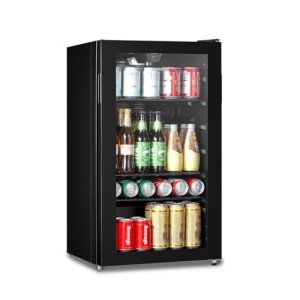The Role and Evolution of Commercial Coolers in the Modern Marketplace
In the busy landscape of modern commerce, the function of commercial coolers can not be overemphasized. These vital tools are the backbone of different industries, from grocery stores and corner store to restaurants and health care centers. This post looks into the significance of commercial coolers, their types, advancements, and the effect they have on organization operations.
Intro to Commercial Coolers
Commercial coolers, also called commercial refrigerators, are developed to preserve a consistent and controlled temperature environment for the storage of perishable products. Unlike home refrigerators, commercial coolers are constructed to hold up against heavy usage and are equipped with functions that guarantee reliability and performance in high-demand settings. They are crucial for preserving the quality and safety of food, beverages, and other temperature-sensitive products.
Kinds Of Commercial Coolers
Refrigerated Display Cases
- Vertical Coolers: Commonly discovered in supermarkets and corner store, these systems enable clients to see and choose products quickly.
- Horizontal Coolers: Often utilized for showing drinks and small products, these units can be either open or with glass doors.
Walk-in Coolers
- Walk-in Freezers: Large, room-sized units created for bulk storage of frozen items.
- Walk-in Coolers: Similar to walk-in freezers however maintain a greater temperature level, suitable for saving dairy, produce, and other perishables.
Undercounter Coolers
- Bar Coolers: Compact systems created to fit under bar counters, suitable for saving beverages and mixers.
- Preparation Coolers: Used in kitchen areas for storing components and ready foods.
Bottle Coolers
- Single-Door Coolers: Ideal for small spaces, these units are typically used in offices and small retail settings.
- Multi-Door Coolers: Larger units with several compartments, ideal for high-volume sales environments.
Reach-in Coolers
- Single-Door Reach-ins: Compact and efficient, these units are perfect for small companies and dining establishments.
- Double-Door Reach-ins: Offer more storage area and appropriate for medium-sized operations.
Developments in Commercial Coolers
The technology behind commercial coolers has actually advanced substantially over the years, leading to more effective and sustainable options. Some noteworthy improvements include:
- Energy Efficiency: Modern coolers are developed to take in less energy, decreasing operational expenses and environmental effect. Functions like LED lighting, high-efficiency compressors, and advanced insulation add to this.
- Smart Technology: Many commercial coolers now come with clever functions, such as remote monitoring, temperature level informs, and automated defrost cycles. These technologies enhance functional performance and item security.
- Eco-Friendly Refrigerants: The use of eco-friendly refrigerants, such as R-290 (propane) and R-600a (isobutane), is ending up being more prevalent, decreasing the carbon footprint of commercial coolers.
- Customization: Manufacturers are using more customizable choices, permitting organizations to customize their coolers to particular needs, such as size, style, and functions.
Effect on Business Operations
Commercial coolers play a vital function in a number of aspects of service operations:
- Product Preservation: By preserving optimum temperature level conditions, coolers guarantee that products stay fresh and safe for consumption, lowering waste and enhancing consumer complete satisfaction.
- Operational Efficiency: Efficient cooling systems decrease downtime and maintenance costs, allowing companies to focus on other critical operations.
- Customer Experience: Well-maintained and visually pleasing coolers can improve the shopping experience, encouraging customers to make purchases.
- Regulatory Compliance: Commercial coolers assist services satisfy health and security regulations, ensuring compliance and avoiding charges.
FAQs
Q: What is the difference between a commercial cooler and a home refrigerator?
- A: Commercial coolers are created for heavy use and are built with more robust materials and advanced functions to guarantee dependability and efficiency in high-demand settings. Household refrigerators, on the other hand, are created for personal usage and are not geared up to deal with the same level of usage or storage capacity.
Q: How can I guarantee my commercial cooler is energy efficient?
- A: To make sure energy effectiveness, choose a cooler with an Energy Star rating, use LED lighting, preserve regular cleansing and upkeep, and think about smart features like remote tracking and automated defrost cycles.
Q: What are the benefits of using eco-friendly refrigerants in commercial coolers?
- A: Eco-friendly refrigerants, such as R-290 and R-600a, have a lower international warming capacity (GWP) and ozone deficiency potential (ODP) compared to conventional refrigerants. This minimizes the ecological impact of commercial coolers and assists companies meet sustainability objectives.
Q: How often should I clean up and keep my commercial cooler?
- A: Regular cleaning and upkeep are crucial for the optimum efficiency of commercial coolers. It is recommended to clean the cooler at least when a month and perform an extensive upkeep check every 6 months. This includes inspecting the seals, cleaning the condenser coils, and making sure the temperature level settings are precise.
Commercial coolers are essential in the modern marketplace, supplying vital services that ensure the quality and security of perishable products. With improvements in technology and a growing focus on sustainability, these systems are ending up being more efficient and environmentally friendly. By comprehending Silent Fridges of commercial coolers and their impact on service operations, owners and managers can make informed decisions that benefit both their operations and the environment.

